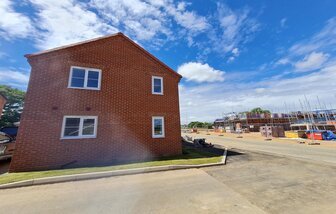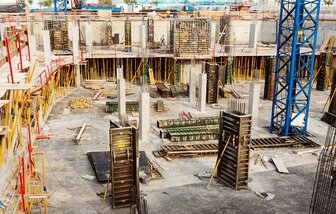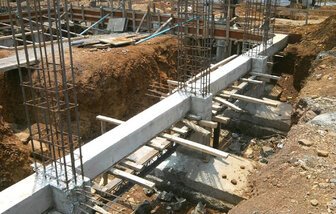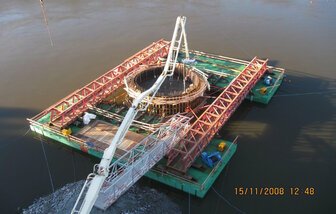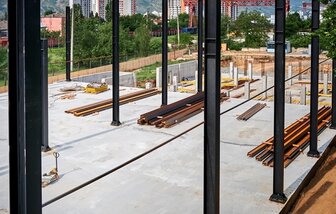What is a Soft Strip Foundation in the UK: All You Need to Know
Soft Strip foundations are the most common type of foundation used in the UK. They consist of a continuous strip of concrete or masonry that supports the load of the walls and floors above. Strip foundations are typically used for low-rise buildings and are suitable for most soil types.
What is a Soft strip foundation overview
Learn about soft strip foundations, a type of shallow strip foundation commonly used in the United Kingdom. Discover how they work, their advantages, and considerations to keep in mind. Find out why soft strip foundations are cost-effective, quick to construct, and adaptable to different soil conditions and building designs.
Ensure compliance with local regulations and consult with a professional structural engineer or builder to determine the most suitable foundation type for your project.
When it comes to building or renovating a property, one of the most critical aspects is the foundation. A well-designed and properly constructed foundation provides stability and support to the entire structure.
In the United Kingdom, there are various types of foundations used, depending on the soil conditions and the specific requirements of the project. One such type is the soft strip foundation.
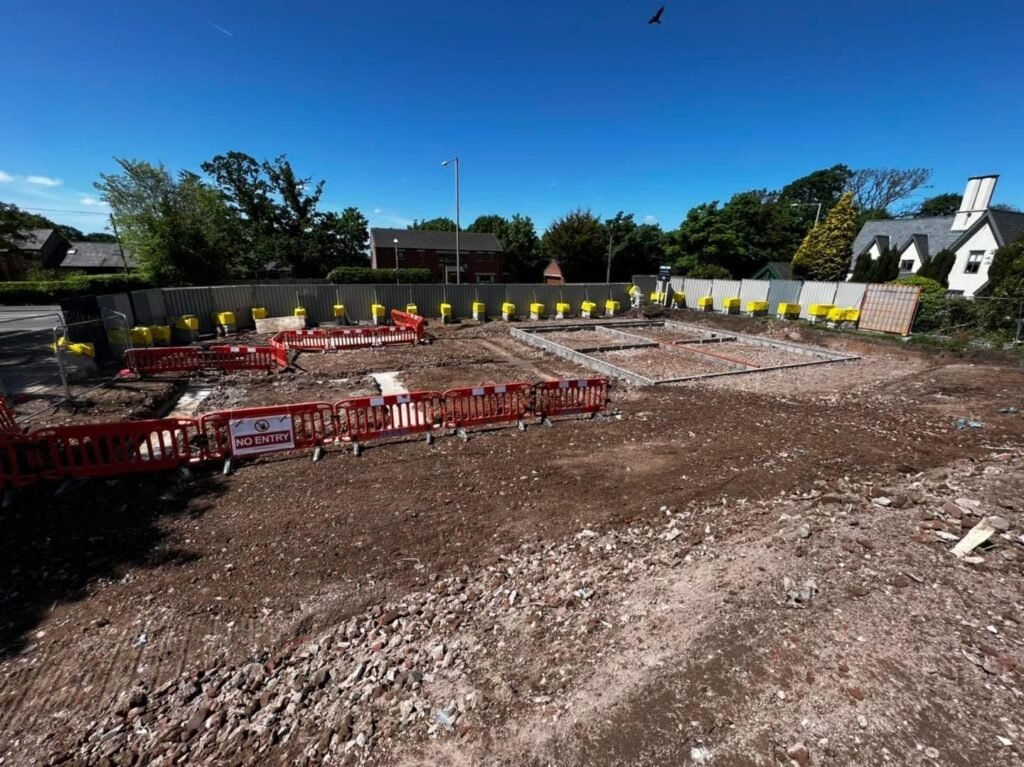
When it comes to construction and renovation projects in the UK, understanding the basics of soft strip building foundations is crucial. Soft strip building foundations refer to the process of removing all non-structural elements within a building, including fixtures, fittings, and finishes, in preparation for a major renovation or demolition. This process is essential to ensure a smooth and efficient construction project while minimizing potential risks and maximizing the reuse of materials.
The primary purpose of a soft strip foundation is to distribute the load of the building evenly across the soil. It consists of a continuous strip of concrete or masonry, usually around 150mm to 450mm wide and 150mm to 600mm deep. The width and depth of the foundation depend on factors such as the weight of the structure, soil conditions, and local building regulations.
Soft strip foundations are typically constructed below the ground level and extend horizontally along the perimeter of the building. They are often reinforced with steel bars or mesh to enhance their strength and durability. The foundation is designed to transfer the load from the walls and columns to the soil, preventing excessive settlement or movement.
Soft strip foundations offer several advantages, making them a popular choice in the UK:
- Cost-effective: Soft strip foundations are generally more cost-effective compared to deep strip foundations or other types of foundations that require extensive excavation.
- Quick construction: The shallow depth of soft strip foundations allows for faster construction, reducing the overall project timeline.
- Less disruption: Since soft strip foundations require minimal excavation, they cause less disruption to the surrounding area and neighboring properties.
- Adaptable: Soft strip foundations can be easily adapted to suit different soil conditions and building designs.
While soft strip foundations have their advantages, there are a few considerations to keep in mind:
- Soil conditions: Soft strip foundations are suitable for soils with good load-bearing capacity. If the soil is weak or prone to settlement, alternative foundation types may be more appropriate.
- Building weight: Soft strip foundations are best suited for lightweight structures. For heavier buildings or multi-story constructions, deep strip foundations or other types of foundations may be required.
- Local regulations: Always consult local building regulations and codes to ensure compliance when choosing a foundation type.
Soft strip building foundations play a vital role in the construction industry for several reasons:
- Efficiency: By removing all non-structural elements, contractors can focus solely on the essential structural components of a building. This allows for a more efficient and streamlined construction process, reducing time and costs.
- Safety: Soft strip building foundations help identify any potential hazards within a building, such as asbestos, lead, or other harmful substances. By removing these elements during the soft strip process, contractors can ensure a safer working environment for all involved.
- Material Reuse: Soft strip building foundations promote sustainability by maximizing the reuse of materials. During the soft strip process, salvageable items such as doors, windows, and fixtures are carefully removed and can be repurposed or sold, reducing waste and benefiting the environment.
- Adaptability: Soft strip building foundations allow for greater flexibility in design and layout changes. By clearing out all non-structural elements, architects and designers have a blank canvas to work with, enabling them to create innovative and functional spaces.
The soft strip building foundations process typically involves the following steps:
- Survey and Assessment: Before commencing the soft strip process, a thorough survey and assessment of the building are conducted. This helps identify any potential risks, hazardous materials, or structural issues that need to be addressed.
- Isolation of Services: All utilities, including water, gas, and electricity, are safely disconnected and isolated to prevent any accidents or damage during the soft strip process.
- Removal of Non-Structural Elements: All non-structural elements, such as partitions, ceilings, floor coverings, fixtures, and fittings, are carefully removed. This is done systematically to ensure minimal disruption and damage to the building’s structure.
- Waste Management: As materials are removed, they are sorted and disposed of appropriately. Salvageable items are set aside for reuse or sale, while hazardous materials are handled and disposed of in accordance with relevant regulations.
- Final Clean and Handover: Once the soft strip process is complete, a thorough cleaning of the building is carried out, ensuring it is ready for the next phase of construction or demolition.
When undertaking a soft strip building foundations project, it is crucial to engage the services of a reputable and experienced contractor. Consider the following factors when choosing a contractor:
- Experience: Look for a contractor with a proven track record in soft strip building foundations. They should have the necessary expertise and knowledge to handle all aspects of the process.
- Compliance: Ensure that the contractor adheres to all relevant health and safety regulations and has the necessary licenses and certifications.
- Sustainability: Choose a contractor who prioritizes sustainability and has a strong commitment to recycling and waste management.
- References and Reviews: Check for references and read reviews from previous clients to gauge the contractor’s reputation and quality of work.
- Communication: Effective communication is essential throughout the project. Choose a contractor who is responsive, transparent, and keeps you informed at every stage.
By understanding the importance of soft strip building foundations and engaging a professional contractor, you can ensure a successful and efficient construction or renovation project in the UK. Soft strip building foundations not only contribute to the safety and sustainability of the construction industry but also provide a solid foundation for creating functional and innovative spaces.
A soft strip foundation is a shallow type of foundation commonly used in the United Kingdom. It is cost-effective, quick to construct, and adaptable to different soil conditions and building designs. However, it is essential to consider factors such as soil conditions, building weight, and local regulations before opting for a soft strip foundation. Consulting with a professional structural engineer or builder is recommended to determine the most suitable foundation type for your project.
Soft Strip foundations
Learn about soft strip foundations, a type of shallow strip foundation commonly used in the United Kingdom. Discover how they work, their advantages, and considerations to keep in mind
Trench fill foundation
Trench fill foundations are similar to strip foundations but differ in that the trench is filled with concrete rather than individual concrete or masonry blocks.
Piled foundation
Piled foundations are used when the soil conditions are challenging or when the load on the foundation is particularly heavy. This type of foundation involves driving or drilling deep piles into the ground
What is a raft foundation?
Raft foundations are a popular choice for many construction projects, providing a stable and durable base for buildings. Explore the benefits of raft foundations, the construction process
Piled raft foundation
Piled raft foundations combine the advantages of piled foundations and raft foundations. They involve the use of both piles and a large concrete slab to distribute the load over a wider area.
Caisson foundation
Caisson foundations, also known as pier foundations, are used in areas with a high water table or poor soil conditions. This type of foundation involves drilling or excavating
Pad foundation
Pad foundations, also known as isolated footings, are used to support individual columns or posts. They consist of a single concrete pad that distributes the load from the column to the soil
Building foundation hub
At Total, we are dedicated to providing you with the essential knowledge and resources you need to build a strong foundation in various fields. Whether you are a student, professional, or simply curious a
Ready to start your project?
Let's Work Together
To get started, for general enquiries simply complete the form below. Provide us with your project details, and our team will review your requirements. We will then get back to you with a customised solution that fits your needs. Whether you have a small-scale project or a large-scale development, we have the expertise and resources to handle it. Once we have received your submission, you will receive a confirmation email (Please check all your email boxes)
If you prefer, and have a project in mind and seeking a price you can also send us your project documents and any photographs directly to Price@totalregen.co.uk. We will carefully examine your documents and provide you with a competitive quote together with a timescale from inception through to completion for your project.

